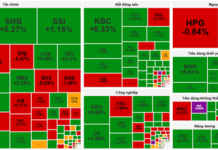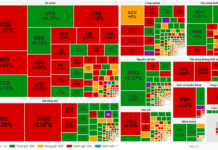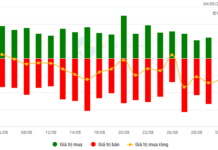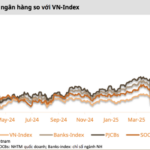The Overview Report on Informal Employment in Hanoi for the period 2021–2023, recently released by the Hanoi Employment Service Center, reveals that informal workers in the city continue to face challenges, ranging from lower incomes to a lack of benefits and protection.
INFORMAL WORKERS LACK ACCESS TO SOCIAL INSURANCE POLICIES
According to the report, as of 2023, the number of informal workers in Hanoi’s market stands at 1.89 million (an increase of 15.3% from the previous year), accounting for 50.17% of the total employed workforce.
Informal workers in Hanoi are predominantly found in sectors with transient and low-skill job characteristics. Most of them have a low level of education or are from rural areas, lacking opportunities for formal employment.
Informal workers earn significantly less than their formal counterparts. Incomes from their primary jobs in 2021–2023 were VND 6.305 million, VND 8.572 million, and VND 8.303 million, respectively, equivalent to approximately 63%, 80%, and 71% of the incomes of formal workers in the same years.
The Hanoi Employment Service Center attributes this disparity to various factors, including the benefits and welfare regimes enjoyed by formal workers and their more stable working conditions. Informal workers often face employment risks, lack clear labor contracts, and have limited access to social insurance, health insurance, and other benefits.
When it comes to gender, there is a clear income divide between men and women in both groups. Men consistently earn higher incomes than women across all years. This can be attributed to several factors, including differences in the types of jobs that men and women engage in, as well as gender inequality in accessing career opportunities and advancement.
Men, whether in formal or informal employment, earn about VND 3 million more than women in the same group. In 2022, the income of formal male workers was VND 10.140 million, while that of female workers in this group was VND 7.441 million.
The income gap between formal and informal workers is more pronounced in urban areas, with a difference of about VND 4 million (an average income of VND 12.026 million for formal workers compared to VND 7.916 million for informal workers during 2021–2023). In rural areas, this gap narrows to approximately VND 1.5 million (an average income of VND 9.037 million for formal workers versus VND 7.617 million for informal workers over the same period).
These disparities may stem from varying working conditions, job opportunities, and economic development between the two regions. Urban areas boast more robust industries and services, enabling higher incomes for workers. In contrast, rural workers are often engaged in agriculture or seasonal work, resulting in more precarious earnings.
INCOME DISPARITIES AMONG DIFFERENT GROUPS OF WORKERS
Notably, an individual’s employment status significantly influences the income gap between formal and informal workers. During 2021–2023, informal workers earned approximately VND 2.4–3.7 million less than their formal counterparts.

This disparity was most pronounced among registered and unregistered business owners (a difference of VND 9.2 million in 2022), possibly reflecting the challenges faced by unregistered businesses, such as limited access to capital and unstable consumer markets, as well as a lack of support from government policies.
In contrast, registered business owners can more readily access financial resources and supportive policies, enabling them to maintain or even increase their incomes.
For wage-earning employees, the gap is approximately VND 3 million, highlighting the distinct income disparity between formal and informal workers.
This disparity underscores the superior income and working conditions enjoyed by formal workers, who typically receive benefits such as social and health insurance, stable employment contracts, and other welfare regimes.
Meanwhile, informal workers often contend with job instability, a lack of fundamental rights, and difficulties in accessing government support.
The lowest average income among informal workers was recorded in the agriculture, forestry, and fisheries sector, with monthly earnings of VND 4.652 million in 2021, VND 7.026 million in 2022, and VND 4.745 million in 2023.
These figures are significantly lower than those in other sectors during the same period. For instance, the service sector recorded monthly incomes of VND 6.359 million, VND 9.34 million, and VND 8.456 million, while the industrial sector reported VND 6.255 million, VND 7.404 million, and VND 8.08 million, respectively.
The report also notes that there is no gender-based difference in the income rankings of informal workers across various economic sectors. However, within each sector, the average income of male informal workers surpasses that of their female counterparts, indicating an income inequality issue within the informal labor market.
The most significant income gap between male and female workers is observed in the agriculture, forestry, and fisheries sector, with male workers earning 2.5 times more than their female counterparts. This disparity creates a substantial divide in living standards and economic opportunity access for female workers.
While the income gap between genders is less pronounced in other sectors than in agriculture, forestry, and fisheries, it still persists, with male workers earning approximately 1.5 times more than female workers on average.
The Hanoi Employment Service Center attributes the income disparity between male and female informal workers to various factors, one of which is gender discrimination in recruitment and career advancement.
Addressing this income gap and improving working conditions for informal workers are crucial goals, not only to safeguard the rights of these workers but also to foster the sustainable development of the economy.




































